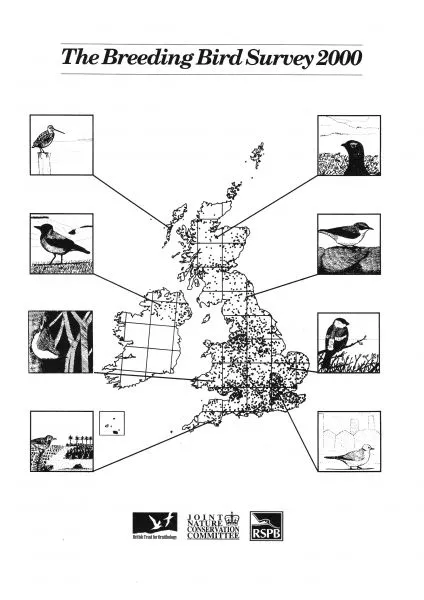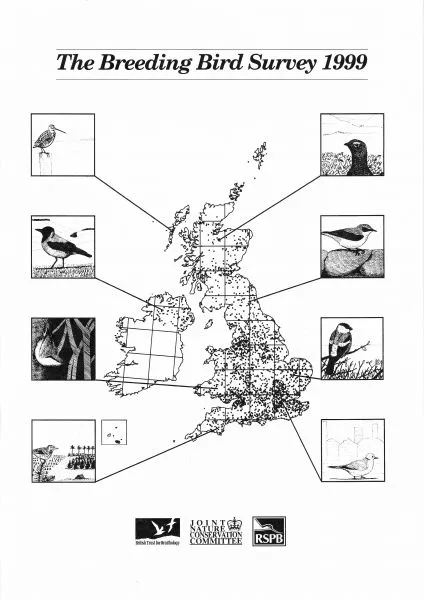The Breeding Bird Survey Report (BBS Report) is published annually and reports on the population tends of the UK's breeding birds.
The Breeding Bird Survey Report is an annual publication containing bird population trends, Official Statistics based on data collected by the BTO/JNCC/RSPB Breeding Bird Survey (BBS), and other results from the scheme.
Since 2016, the Breeding Bird Survey Report has also included population trends of specialist waterbird species, again based on volunteer-collected data from the BTO/JNCC/RSPB Waterways Breeding Bird Survey (WBBS).
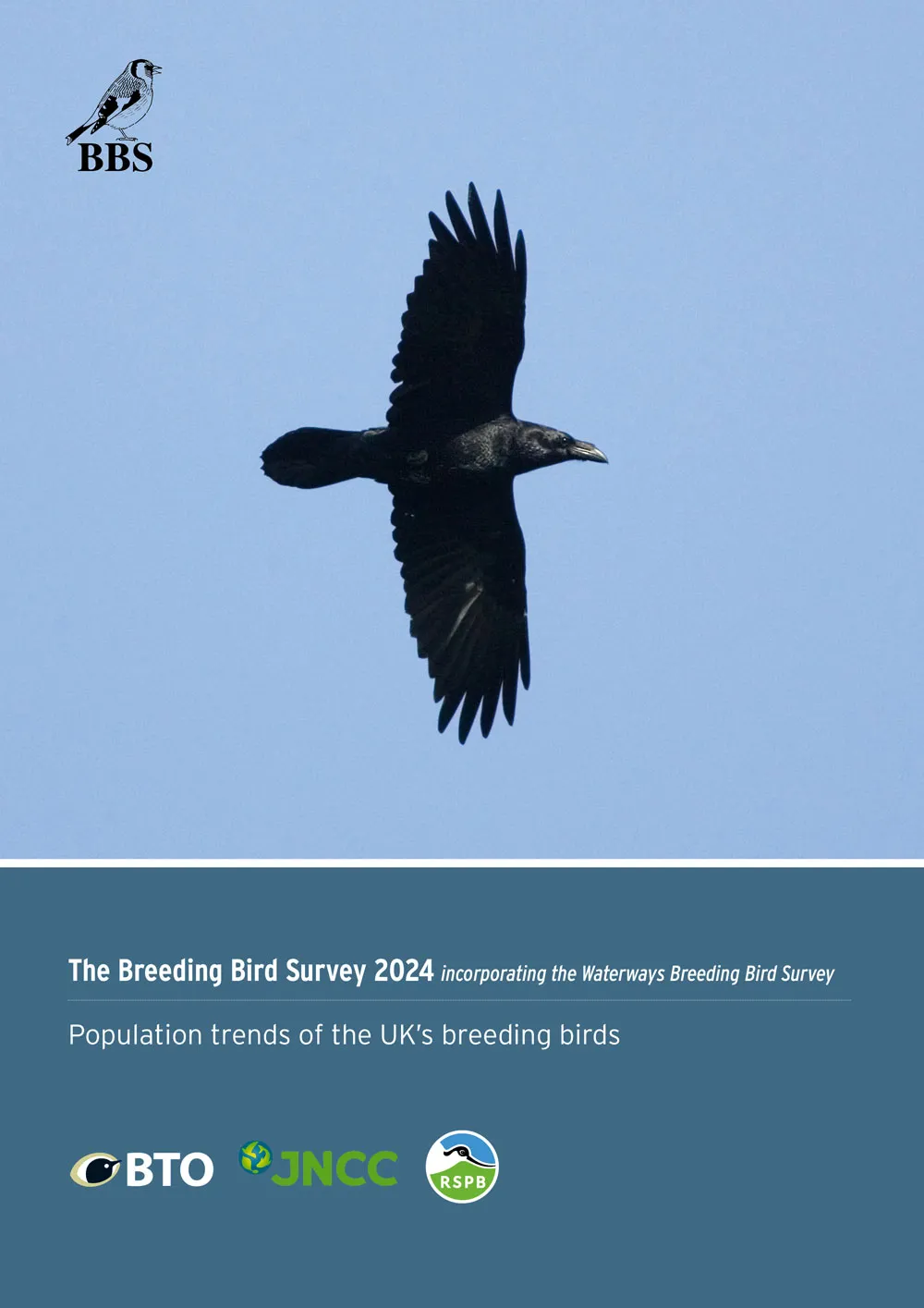
About the Breeding Bird Survey Report
The annual Breeding Bird Survey report is published each year by BTO. It documents the population trends of around 120 UK breeding birds, based on data gathered by volunteers through the BTO/JNCC/RSPB Breeding Bird Survey (BBS). Since 2016, the Breeding Bird Survey Report has also included population trends of specialist waterbird species, again based on volunteer-collected data from the BTO/JNCC/RSPB Waterways Breeding Bird Survey (WBBS).
The report is produced by the BBS National Organiser at BTO, with population trends produced by BTO Data Scientists and Research Ecologists. The population trends and indices in the report are Official Statistics, so follow standards set out in the Code of Practice for Official Statistics. This ensures that published government statistics are high-quality and produced by trustworthy organisations.
Printed copies of the Breeding Bird Survey Report are sent to all BBS volunteers and to a range of conservation practitioners and policymakers.
- To request an additional printed copy, please contact the BBS Organiser at bbs@bto.org.
Digital versions of reports are available to view and download for free.
Information in the report
The population trend information for breeding birds is provided for the UK, England, Scotland, Wales, and Northern Ireland, as well as for English regions. Data collected on the Isle of Man and the Channel Islands contribute towards the UK trends. These trends and indices provide robust evidence on the way that wild bird populations are changing in these regions.
In addition to data and trends about UK breeding birds, the Breeding Bird Survey Report includes:
- Articles by authors from the BBS and WBBS partners (BTO, JNCC and RSPB) about the role of BBS data in conservation, and updates on newly published or ongoing research using BBS data
- An overview of BBS and WBBS methodology and guidelines for interpreting the annual results of the survey
- The results of BBS mammal monitoring and the Wider Countryside Butterfly Survey, optional additional elements of BBS monitoring
- Acknowledgement and thanks to organisations and individuals who have supported the scheme through funding or volunteering
Impact of the Breeding Bird Survey Report
The BBS and the WBBS are the main schemes for monitoring the population changes of the UK’s widespread breeding birds. The results published in the Breeding Bird Survey Report are used widely by Defra and the Statutory Nature Conservation Bodies (SNCBs, e.g. Natural England and NatureScot) to set priorities and to inform conservation action, and as the evidence base against which the UK’s biodiversity targets are measured.
The Breeding Bird Survey Report is just one of many valuable publications produced using BBS data. It sits alongside other regular Official Statistics such as the Wild Bird Indicators, contributions to the Pan-European Common Bird Monitoring Scheme (PECBMS) and the regular Birds of Conservation Concern assessments, which organisations including BTO, JNCC and RSPB use to identify species in rapid decline that need urgent conservation action.
In practice, this means that trends from the Breeding Bird Survey report contribute directly to the conservation and management of our wild bird populations. BBS data are routinely used to assess the effectiveness of agricultural policies designed to benefit wildlife, and in particular, the impact of agri-environment schemes (AES) on breeding birds. More recently the data have also been used to evaluate the benefits of protected areas designated for wildlife, like Sites of Special Scientific Interest (SSSI), Special Protection Areas (SPAs) and Special Areas of Conservation (SACs). Recently, researchers at BTO have also used BBS data to investigate the impacts of climate change on the UK’s birds, and the role of disease in bird population declines.
Further information
Further information, including population trend graphs, is available online for the Breeding Bird Survey and the Waterways Breeding Bird Survey.
Full species-by-species discussion of these results, and of results from other surveys, can be found on BirdFacts.
Latest report
The Breeding Bird Survey Report is available digitally for free, to read and download.
- Download a PDF of the latest Breeding Bird Survey Report.
- Read the latest Breeding Bird Survey Report online in the browser below.
All BBS Reports
- Please note: the date of the Breeding Bird Survey Report refers to the most recent year of data collection, not the year of publication.
Search
The Breeding Bird Survey 1998
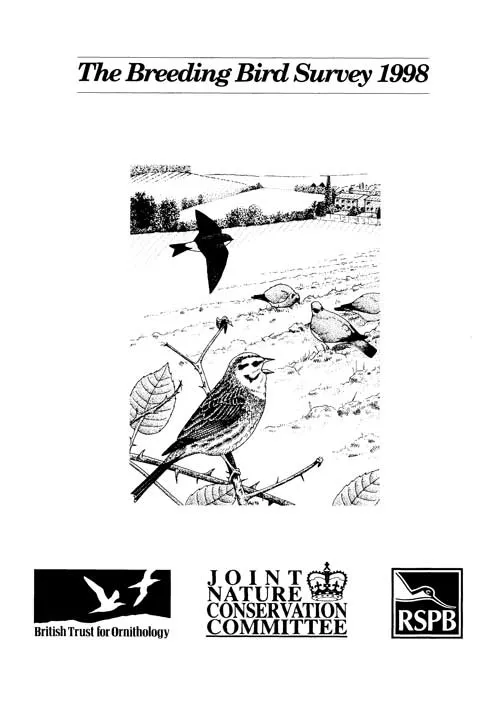
This is the fourth annual report of the BTOTNCC/RSPB Breeding Bird Survey (BBS), covering the years 1997 to 1998 and detailing progress since the scheme's introduction in 1994. The primary aim of the survey is to provide population trends for a range of common and widespread birds in the UK.
01.08.99
Reports
The Breeding Bird Survey 1996-1997
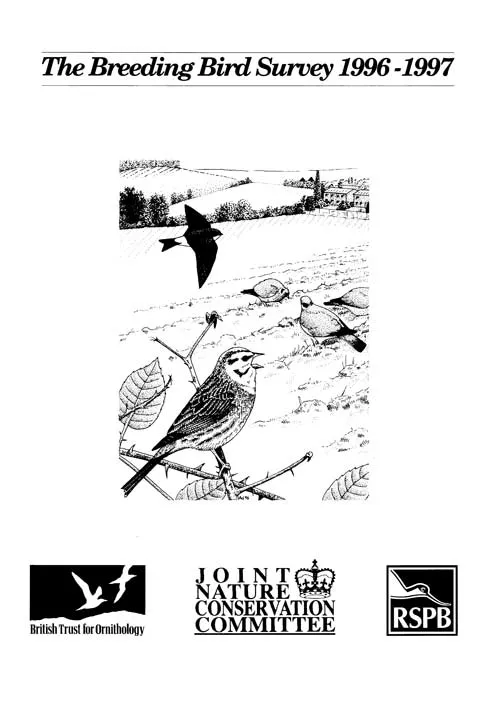
This is the third annual report of the BTO / JNCC /RSPB Breeding Bird Survey (BBS), covering the years 1996 and 1997 and also the emerging trends from 1994 to 1997. The report details progress since the scheme's introduction in 1994. The primary aim of the survey is to provide representative population trends for a range of common and widespread birds in the UK.
01.08.98
Reports
The Breeding Bird Survey 1995-1996
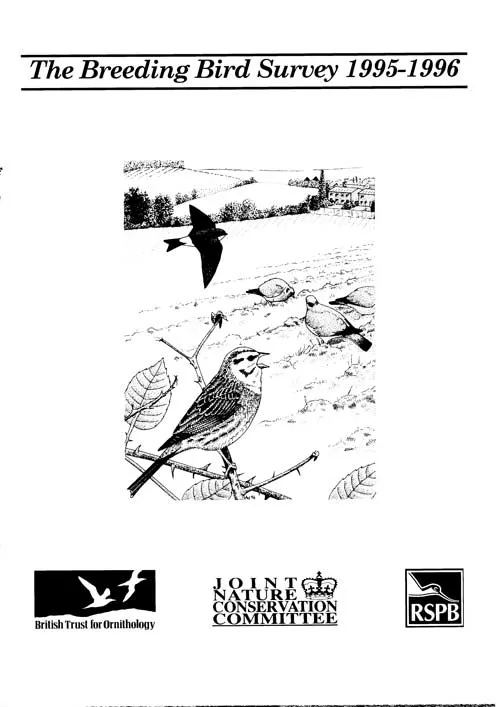
This is the second annual report of the BTO / JNCC /RSPB Breeding Bird Survey (BBS), covering the years 1995 and 1996. The report details progress since the scheme's introduction in 1994. The primary aim of the survey is to provide representative population trend indices for a range of common and widespread birds in the UK.
01.08.97
Reports
The Breeding Bird Survey 1994-1995
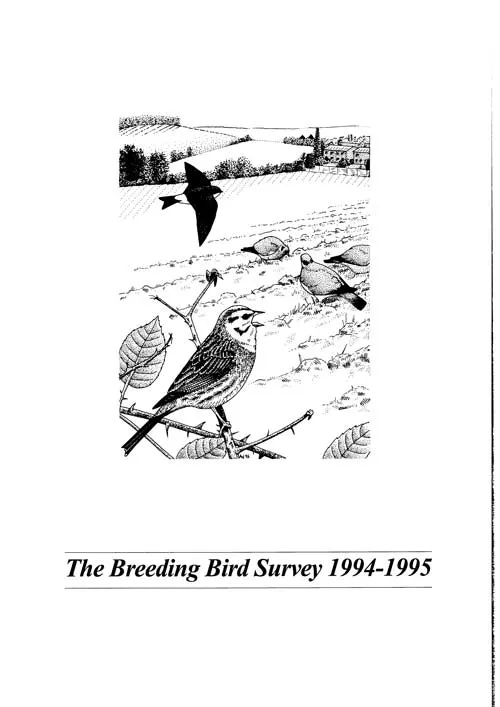
This is the first annual report of the BBS and is designed to inform birdwatchers, especially survey volunteers and organisers, of progress and of future plans. It will also provide a valuable source of information for conservation practitioners and policy makers who are interested in the results of the suryey.
01.08.96
Reports
